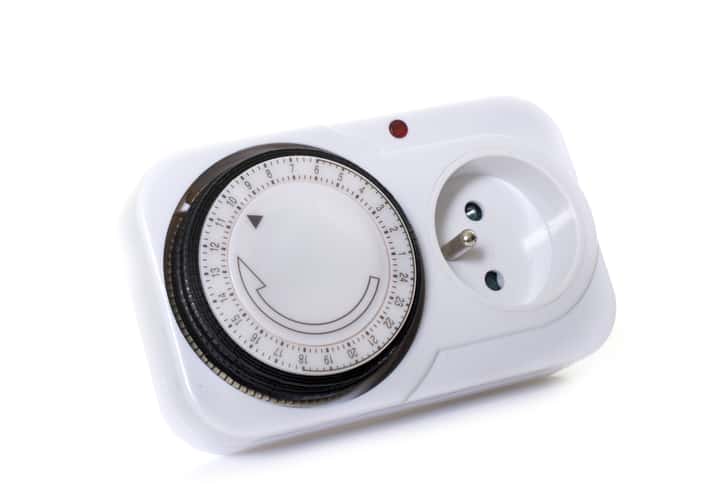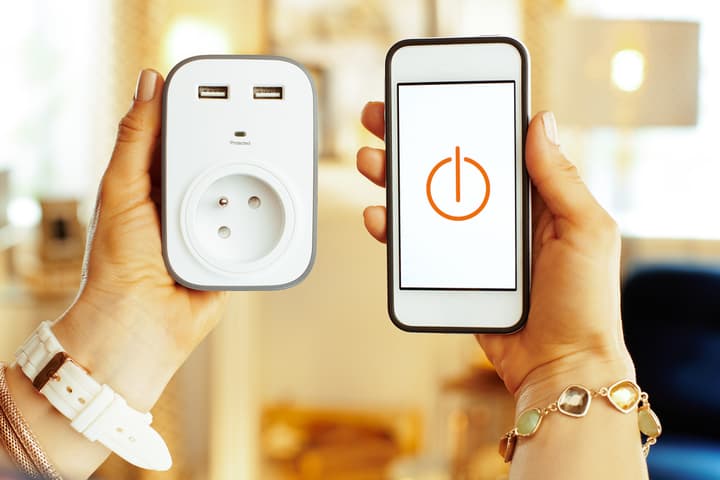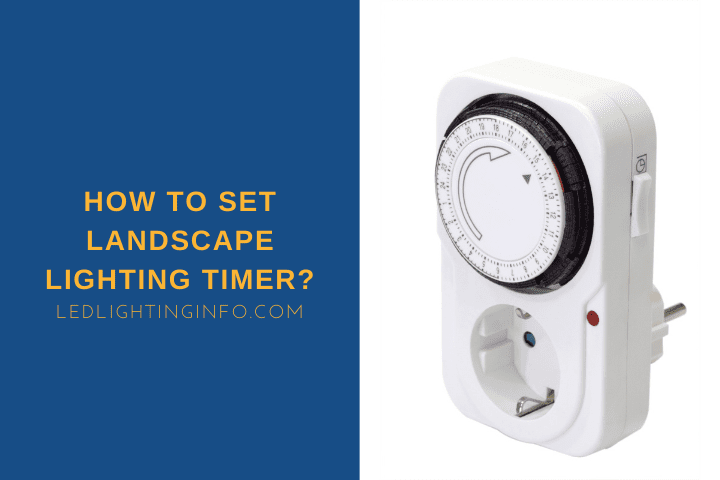Having your landscape lights on 24/7 is a waste of electricity, and you’d hardly notice them during the daylight.
At the same time, you don’t want to always have to wire a switch onto the circuit to give you manual control.
It’s not as convenient, and if you’re returning home in the evening or if you’re comfy on your decking, you don’t want to have to go to the switch to enjoy the lights.
This is where a timer is an excellent addition to your landscape lighting circuit.
This lets you set the time you want the lights to switch on and off, meaning no wasted money and no need to switch them on yourself.
There are two types of timer – analog and digital. Analog timers are set using pins that are pushed or pulled into position. In contrast, digital ones are programmable to the minute. If the timer isn’t working and correctly set, it can be reset.
Let’s go into a bit more detail on:
- How to change a timer
- What could be causing a timer to stop working
- How to reset a timer
How To Adjust Timer On Outdoor Lights
There are two main types of timer that you can install for our outdoor lighting, and the way they’re adjusted depends on how they’re made.
Analogue Timer

Analog timers (Amazon) are sometimes referred to as mechanical timers.
They’re a much simpler timer than a digital one, but you lose some customization options because of that.
The way these timers work is through a push/pull pin system. The timer is a circle, surrounded by these pins that you can toggle.
Sometimes they will be push buttons that are ‘on’ when pushed in, and sometimes the pins are moved inwards or outwards.
The ‘on’ position is usually when the pin is closer to the circle center.
Then in the middle, you have a way of setting the current time.
This will either be with a basic clock face with hands, or it’ll be a dial that you turn to point to the current time.
This dial will then continue to turn throughout the day.
From here, it’s as simple as pushing the pins in for the times that you want the lights on and leaving them out when you don’t.
It’s not about setting a start and finish time – basically, the lights will be on for the duration of the pins in the ‘on’ position.
In terms of customization, that all depends on the number of pins. For example, some will have a pin for each hour, limiting you to only set the timer by the hour.
Others might have more pins, usually up to a maximum of 96, to control every 15 minutes.
You can also buy these same kinds of mechanical analog timers for sockets.
If your landscape lighting isn’t a closed circuit and is instead powered through a plug, just pick up one of these times, plug it into the socket and then plug the lighting plug into the timer.
They work exactly the same way and can be used for anything around the home, not just landscape lights.
Though if you want a timer and are using a plug, a better option would be a smart plug (Amazon).
You can set these to be as specific as you want, and can override them from your smartphone too.
Digital Timer

The alternative to analog timers, digital timers give you precision controls, letting you program them to the minute.
You can buy standalone digital timers, but they’re not as common.
Instead, a lot of transformers that are used on full lighting setups will have their own digital timer, such as this Malibu one (Amazon).
They use a digital clock with a button interface. First, set the current time, and then the time you want the lights to switch on, accurate to the minute.
Then set the time that you want the lights to switch off.
The interface might be a little more complicated. Still, it’s usually easy enough to work out, and it’s a lot more accurate than an analog timer.
A lot of these transformers will also have multiple options.
That Malibu one comes with a light sensor, so you can choose to set the time to switch on at dusk and then turn off either after a set number of hours or your programmed time.
What To Do When Lighting Timer Is Not Working

Firstly, find out whether the timer is working at all. If the lights are turning on at the wrong times, there’s a good chance you’ve set the timer incorrectly.
In that case, the first thing to check is whether you’ve got the 24-hour clock right – they can sometimes be easy to get muddled with these timers.
If the lights are turning on at 9am instead of 9pm, you might just need to swap the settings round.
When you’ve ruled out the 12/24 hour issue, but the lights are working, the timer might have the current time set wrong, so check that too.
If you’ve told it to turn on at 9pm but the lights switch-on at 7pm, make sure the current time is accurate.
In a situation when the timer’s not working at all, it’s either wired incorrectly or has been damaged.
When the timer is outdoors, ensure it’s rated for outdoor use and is waterproof. If not, the elements might have damaged it – switch off the power, remove it and replace it.
Sometimes it’s a wiring issue, and you should be able to notice it immediately as it shouldn’t work at all.
If you can see the correct time on a digital timer, or if you can hear the analogue one ticking, then it’s more likely to be damaged, since it should be working.
Also read: How To Find Buried Landscape Lighting Wire?
How To Reset Landscape Lighting Timer

Timers will have different reset options. A reset is sometimes a good way of clearing the timer of any patterns and getting it back to working order.
You should always check the manual for the specific reset instructions for your timer.
Broadly speaking, on a digital timer, look for a button or a recess with an R, RES, or RESET label.
It might be a button you can press or a hidden one that needs a pin to push it in.
If there’s no obvious reset, check the menu on the timer.
Failing that, disconnect it from the power, leave it for 10 minutes or so, then reconnect it.
With analog timers, you should be able to clear it by simply moving all the pins into the ‘off’ position.
Because these timers are mechanical and don’t have a memory, you shouldn’t need to disconnect them from the power to do this.
Also read: Where To Place Landscape Lighting?
Final Words
Timers usually are pretty reliable, and having issues with them is rare. That being said, if you do have a problem, you’ll want to resolve it as soon as you can.
That way, you aren’t left without your home being lit or with lights that are left switched on even during broad daylight.
Do you have a favorite timer that you’ve used?

